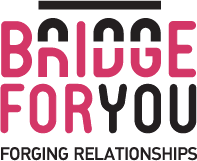Gerd Liegerer has set - with his company Bud & Terence - himself the task of Employer Branding. According to him, Employer Branding is not a single action, but the famous roter Faden, which builds up the employer's pledge internally and externally, optimizes it, communicates it and anchors it in the long term.
We asked Gerd Liegerer, the founder of Bud & Terence, about management and company cultures, pitfalls and successes in his work and tasks in EB regarding existing employees & potential candidates.
BFY: What was the reason to start organizing Employer Branding Days a couple of years ago?
GL: When starting Bud & Terence I had the impression that Employer Branding already existed in the HR departments. But after a while, I had the feeling that companies are far away from sustainable, successful EB. So I started the Employer Branding Days, an event series in Linz, Vienna and Salzburg. On those days companies with a lot of good ideas and experiences in EB present their knowledge to others. Each event has more than 100 visitors – Linz is the biggest with more than 250 people – and they all enjoy the information sharing and networking throughout the day.

BFY: What does sustainable Employer Branding mean and above all how can it be used use this successfully in a company? What is your favorite example you learned from companies you invited in the last years?
GL: For us at Bud & Terence sustainable Employer Branding means that the majority of the company is involved and understands the need and benefits of successful Employer Branding. This has to start at the top management level and go down to the bottom. Employer Branding is therefore not a matter of fruit baskets and free parking. It is mainly a cultural topic, and it does not need a look into a crystal ball to understand that culture is mainly driven by the management.
One of my favorite examples is the 5* hotel Dachsteinkönig in Gosau, Upper Austria. The image of the tourism sector is not too good, the working hours are very long and not always properly scheduled, and salaries are low. But this hotel opened in 2016 with a completely different attitude and treatment of employees. Its management is open to ideas and feedback from the staff and it also has a hands-on mentality. Naturally, it also has fruit baskets and free parking for its employees, but this is only a small part of sustainable EB.
BFY: You believe that Employer Branding is not a project of the HR department and certainly not just marketing, but it will only be a success if the entire company is behind it and can get involved. Have you had a lot of opportunities to work with companies where this theoretical statement came alive? If you have not, what were the obstacles?
GL: More and more companies are on the right path to understand sustainable Employer Branding. When we are invited to pitch our services it usually starts with the HR department. In many cases, we can convince them to bring marketing and management on board in order to set up a strategic project. The main problem in many companies is the lack of power in HR. “Bring me new employees” is often not the only task of the HR Departments. But strategic and powerful HR can save large amounts of money and bring even more revenue. So for us at Bud & Terence, it is crucial to increase the standing of HR bringing them into the leading position for Employer Branding.
The worst attitude we were facing came from a marketing guy during our pitch. He said namely: “I will not allow job ads on my facebook page”. His facebook page he said, not the company’s facebook page. This shows how important it is to have the management involved from the beginning, so these internal conflicts can be put out immediately.
BFY: Earlier you said that small- and medium-sized businesses are still cautious about Employer Branding, fearing they cannot compete with the big ones. Is this still the current state in Austria in your opinion?
GL: Yes, this is basically what we encounter every day. This was also a reason why we started the Employer Branding Days. We want to show that sustainable, successful Employer Branding is not only a matter of money and personal resources. Companies with limited resources need a more detailed and better understanding of their culture and their target groups (employees, applicants and stakeholders) so that they can use their budgets more efficiently.
BFY: Why is it important to regularly analyze a company's employer brand? How could you do it with your EB tool?
GL: It is very important to measure your efforts regarding Employer Branding on a regular basis. This is the only way how to reach the requirements within your target groups and how to save some money when adapting your tasks because of low return.
The Employer Branding Talent, a tool for analyzing the status of your Employer Brand within one day, can help to do permanent check-ups and also to create a better understanding of your employees and applicants. Within only one day you work in a new and very creative way on the main topics of Employer Branding and also get a lot of ideas on how to improve your branding.
 BFY: Why was it important for you to develop a board game and avoid using another digital tool? What are the advantages of it?
BFY: Why was it important for you to develop a board game and avoid using another digital tool? What are the advantages of it?
GL: Since our world is full of digital tools, we wanted to create something where people come together to work and discuss commonalities on this important topic of Employer Branding. Branding cannot be defined digitally - it is mainly a cultural thing and that can only be analyzed and increased when people work on it personally.
BFY: What employer brands inspire you globally and why?
GL: I can say that Porsche started a very interesting EB project last year. Everybody knows Porsche, but mainly from their cars. The fact that they are one of the largest employers in Austria and Germany is often not seen. Also that they are not only searching for mechanics and salespeople but have an urgent need for software developers and financial experts. They started to analyze their needs top-down and involved each department and target group. The outcome is not completely finished, because the project is still going on, but it is a very good example of how to develop your global employer brand step by step.
BFY: What’s next for employer branding in your opinion?
GL: People do not leave companies - they usually leave their bosses. There has to be a change in leadership since the current management tools do not apply to generations Y and Z. Since the baby boomers will retire in the next years, there is a great chance of change when generation X moves into management; but still they have to adapt their previous learnings from college and lead in a different way to win and develop the next generations.
Therefore the most important upcoming subtopic in Employer Branding will be the cultural change and its effects on management. If companies can provide the best environment for the employees, they will be chosen as employer of choice.






